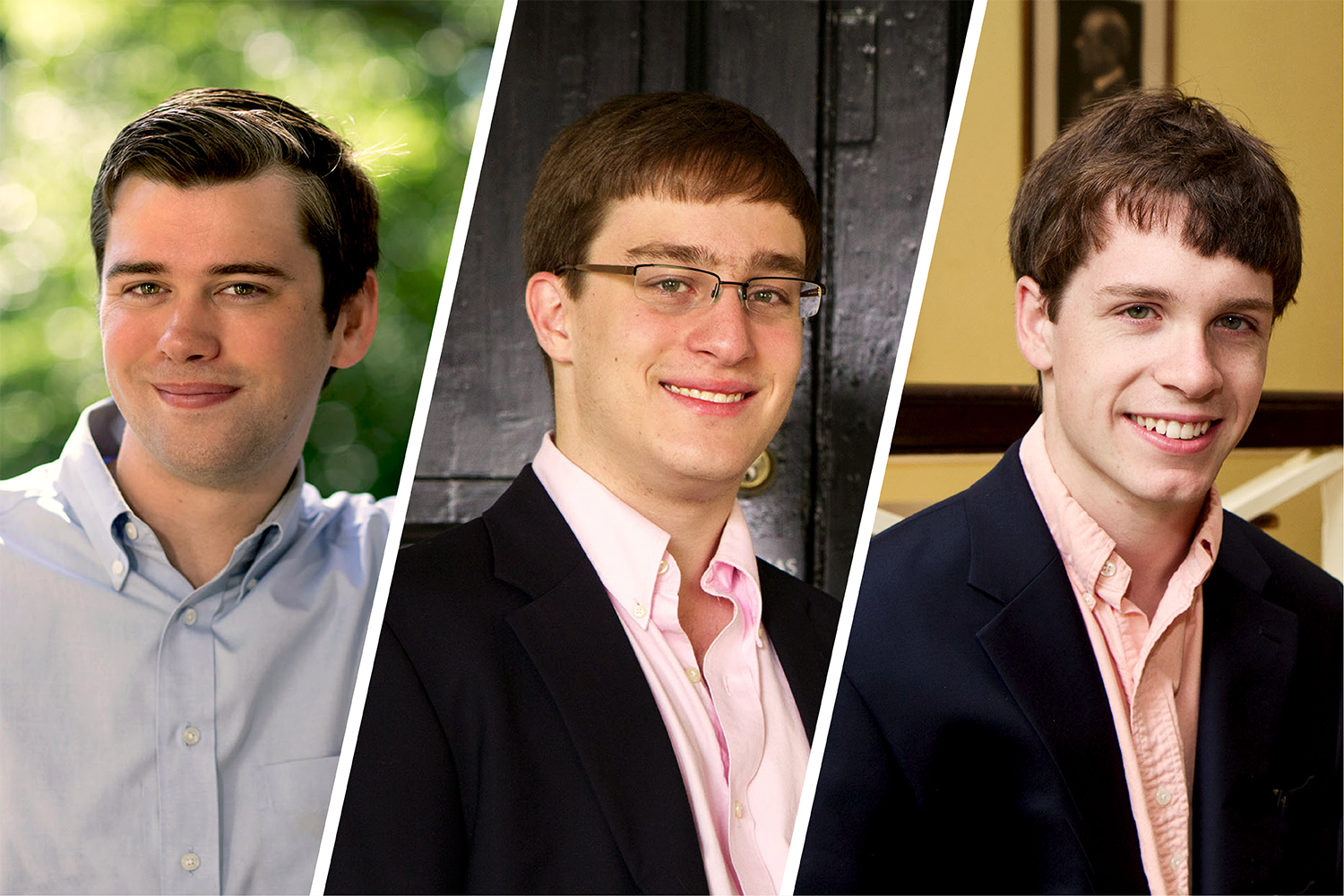Four University of Virginia scholars will spend the summer focusing on the Lawn, conducting three separate research projects involving the Academical Village.
Their research is being funded by the William R. Kenan Jr. Endowment Fund of the Academical Village, which awards summer grants supporting students who conduct research projects that increase public understanding of the original precinct of the University designed by Thomas Jefferson.
“With the University bicentennial approaching, the Kenan Fellowship plays an important role in helping us understand the mission of the Academical Village,” said Brian Cullaty, director of undergraduate research opportunities at the Center for Undergraduate Excellence. “These projects will shed new light not only on the purposes of the Academical Village, but on the history of our University as well.”
Two of the recipients, Thomas Howard and Owen Gallogly, are repeat Kenan winners and will be using the research funds to publish their earlier research on the Jefferson Literary and Debating Society.
This year’s award recipients are:
• Baxter Craven of Charlotte, North Carolina, a graduate student in the School of Architecture, who is exploring the history of student clubs and how they physically shaped the Academical Village by altering their spaces.
“A lot has been written about how the University changed the buildings, or how the professors changed the buildings, in the Academical Village, but there has not been a lot of research into how the students changed the buildings,” Craven said. “The Jefferson Literary and Debating Society and the Washington Literary Society and Debating Union were allowed to gut and add on to their structures.”
He said that the upper floor of Hotel C, which houses the Jefferson Society, had originally been three separate rooms – a dining room as well as an office and a bedroom for the hotelkeeper. The society opened the top floor into the single room it is now.
A graduate of the University of North Carolina with a degree in art history, Craven is a member of the Society of Architectural Historians and the Jefferson Literary and Debating Society.
• Howard and Gallogly, both from Richmond and both 2013 history graduates of the College of Arts & Sciences, are using the Kenan funding to publish their previous research on the Jefferson Literary and Debating Society, the University’s oldest student organization, in a book titled “Society Ties.”
“Founded in 1825, the society has counted the likes of Woodrow Wilson and Edgar Allan Poe among its members, and continues to be one of the largest and most active student organizations on the Grounds,” Howard said. “But ‘Society Ties’ is more than just a history of the Jefferson Society; it is a history of student life at the University of Virginia. It explores what motivates students during their time at the University and how they experience the ineffable place that is Jefferson’s Academical Village.”
Howard, who received a master’s degree in higher education administration from UVA in 2014, was a Lawn Resident, president of the Jefferson Society and a member of the Raven Society. While he was a student he received a Kenan award, a Finger Family Award for history research and an Archie K. Davis Fellowship.
Gallogly was a Lawn resident and president of the Jefferson Society. He was an Echols Scholar and a Kenan research award recipient.
• Megan Friedman of Lakeland, Florida, a rising second-year master’s student in the School of Architecture, wants to examine the “Palladian proportion” of Thomas Jefferson’s Academical Village.
When designing the Academical Village, Jefferson used the work of Venetian architect Andrea Palladio as a guide. Friedman’s research will focus on Jefferson’s design as an implementation of Palladio’s theories – and then she will reexamine these theories, allowing for a more comprehensive understanding of the Lawn. Part of her investigation includes a visit to Palladio’s villa in Vicenza.
“I will be studying historical theories of proportion through contemporary lenses, focusing on Jefferson’s application of Palladian proportion on the Lawn,” Friedman said. “This summer, I hope to gain new insights on Palladian proportions by traveling to Vicenza and using those insights to illuminate my design education.”
Friedman received a bachelor’s degree in art history from Duke University in 2015.
Media Contact
Article Information
June 17, 2016
/content/kenan-awards-support-research-uvas-academical-village

